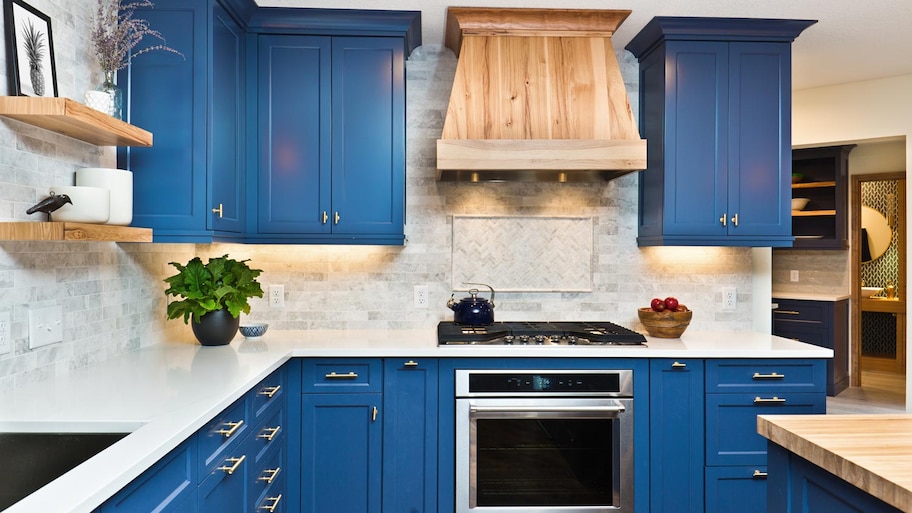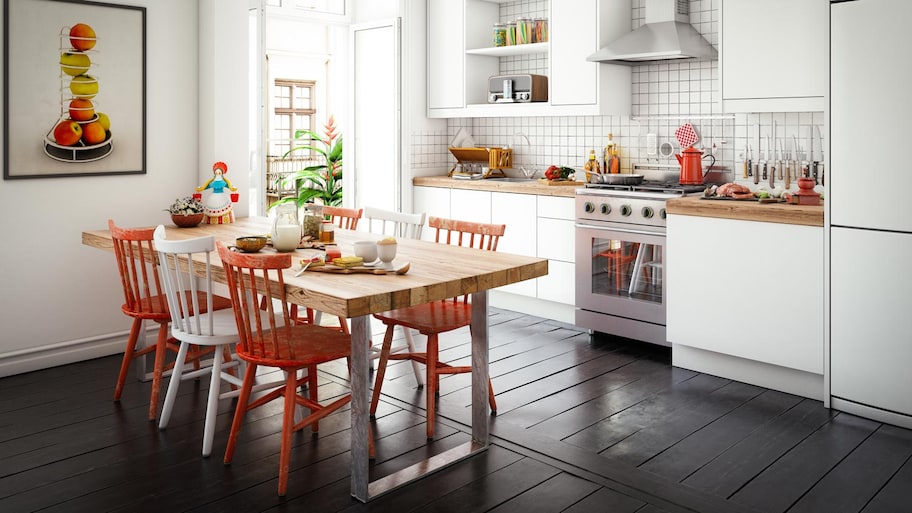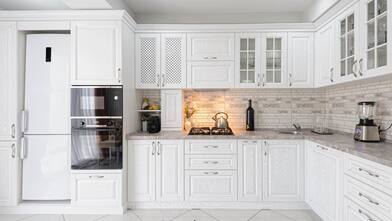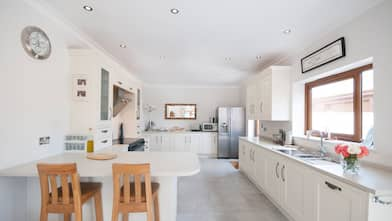In addition to picking your signature look, choose a wood that can withstand daily wear and tear
Cabinets are key to keeping your space clutter-free and serving some serious style. They work their way into the kitchen, bathroom, pantry, and even built-in living room shelving units. But because each room deals with a different level of traffic, humidity, and sunlight, choosing the best wood for your cabinet doors takes a bit more foresight than considering cost and appearance alone.
Cabinet Use, Color, and Style
Think of your kitchen cabinets as the glue that ties together your interior paint colors, countertops, and even the furniture of the room. But in addition to playing a role in the room's style, cabinets serve a crucial functional purpose as well. Depending on the space, cabinets can get tugged, bumped, and slammed on a nearly daily basis.
So choosing the right wood for your next cabinet installation should balance a handful of factors:
Budget
Durability
Reaction to humidity
Color
Natural grain
Structure of the cabinet door
Use
While you do want to keep the price in mind, your chosen wood’s longevity should stand up against the cabinets’ everyday use. Most wood warps the moment it comes in contact with moisture, so it's important to pick a factory-finished material before installing it in a humid space such as a kitchen or a bathroom.
Cabinets that see less traffic—perhaps those in your home office’s built-in bookshelf—fare better with softer woods that won't get nicked and bumped.
Color

When it comes to choosing your cabinet colors, the options seem limitless. Many natural woods come in an endless list of hues, finishes, and one-of-a-kind grain markings. Additionally, many natural (and nearly all manufactured) woods can be painted, stained, or covered with a veneer for extra style and strength.
If you do need to alter the finish, remember to calculate the cost of painting, refacing, or staining your cabinets.
Style
And, of course, you have to consider style. Some kitchen cabinets incorporate glass windows, unique carvings, or rustic hardware. Countryside and farmhouse kitchens may opt for more of an uneven, unfinished look using a strong hardwood like pine or hickory. It all comes down to your personal preference!
Natural vs. Manufactured Wood Cabinets

You may think opting for manufactured wood isn’t the highest-quality route for cabinet doors. But think again—many home designers choose synthetic materials for cabinets both for their budget and for their durability.
Unlike many natural woods, you won't have to worry as much about warping, impact damage, and bugs moving in. Manufactured wood such as medium density fiberboard (MDF) is a bit easier to tailor for large projects and unique design ideas.
On the other hand, we understand if you crave the look and smell of cherry oak cabinetry. With the right care, natural wood will hold up for decades. It also has a specific high-quality aesthetic that’s customized and carved to your vision.
Let's break down the pros and cons of each major type of cabinet wood.
1. Plywood
Perhaps the most familiar manufactured material, plywood alternates the grain of thin layers of wood. The result: extreme durability. While plywood holds up against moisture, its natural qualities can warp over time.
Most plywood cabinet doors come with a veneer coating. Or, you can easily paint or stain them to style your kitchen.
2. Particleboard
Also a fine candidate for veneers, particleboard combines pieces of wood and resin to create one dense piece of building material. You'll find a range of grades of particleboard that vary in price and durability.
3. Medium Density Fiberboard
Many designers opt for medium density fiberboard because it uses smaller shavings than what’s used in particleboard, making MFD denser and stronger against screws, use, and tailored design work. Its smooth service means that it’s easier to paint and stain as well.
On top of all of this, MDF uses recycled wood fibers, making it a great eco-friendly option for wood cabinets.
4. Maple
Those looking for custom cabinets that have a sleek, modern look will love hard maple. While incredibly durable, maple isn't as tough against scratches or changes in humidity, so keep this in mind before opting for its extra costs.
5. Oak
Oak offers excellent variety for a range of home design styles. Red oak includes larger grains and a richer hue, while white oak provides a more minimalist aesthetic as well as a vintage style.
What's more, oak is not as expensive as many other go-to natural woods. In addition to its strength for customization, it also lasts long enough to make it worth the investment.
6. Cherry
If you want to bring some elegant flair to your space, you can’t go wrong with the deep red hues of cherry wood cabinets. Cherry wood is both hard and has fine, straight grains, making it ideal for a classic home look.
It's important to note that cherry wood can darken over time, especially if it’s exposed to sunlight. So if your kitchen windows shine sunlight on half of your cabinets every morning, you might eventually end up with two different shades. Speak with your cabinet design team about keeping your cabinets protected and the colors consistent.
7. Walnut
Choose from a color wheel when picking out the best walnut wood for your cabinet doors. This durable wood ranges from warm reddish-brown to a creamy gray. Walnut also has a straight, small grain, making this a fine choice for simple and modern home styles.
Designers consider this a “medium hardwood,” so while it can get nicked in high-traffic zones, walnut is an excellent option for cabinets only used on occasion.
8. Hickory
Part of the walnut family, hickory is known for its extreme durability and strength, especially over the years. You can always spot a set of hickory cabinets by its extreme variations in color, even within a few inches. Dark knots, grains, and unique striations fill the wood for a dramatic look.
The two downsides to hickory are its high price tag and its reaction to chemical cleaners—harsh solutions can eventually strip the finish and discolor the wood beneath. Always opt for mild or natural cleaners to avoid leaving behind unsightly stains.
9. Pine
While pine is very easy to find—and therefore a bit more affordable than other natural woods—it is also quite soft. If you have a large family that spends a lot of time bumping around the cabinets, this may not be the one for you.
However, pine is a popular choice for its versatility in color, and it’s easy to stain pale pine to your liking.
Rustic and cozy or sleek and minimalist—choose the cabinet doors that speak to your one-of-a-kind home vision. If natural wood is not the path for you, work with cabinet contractors near you to customize your cabinets with paint, wood stain, or a unique veneer exterior to make it your own.





